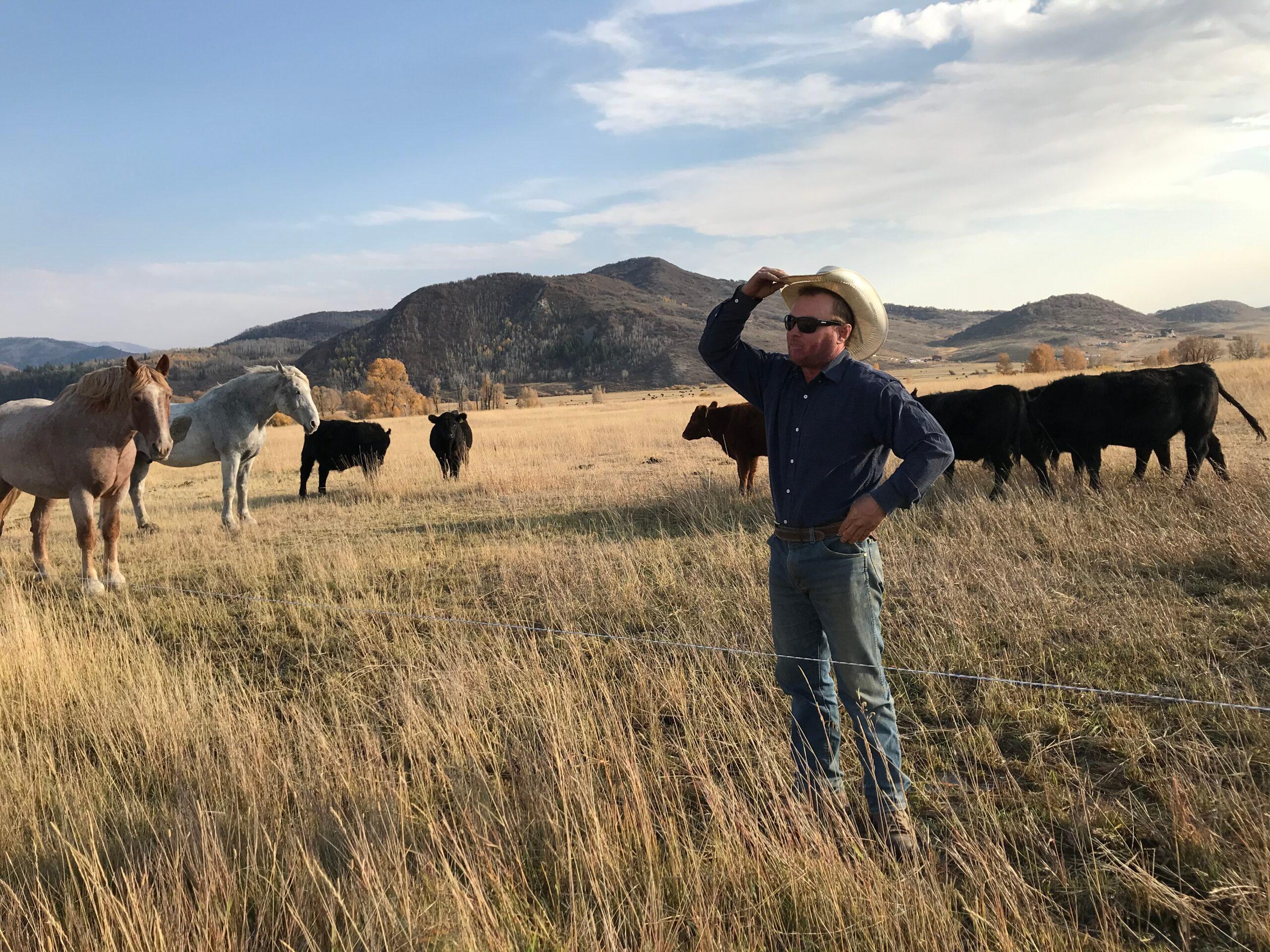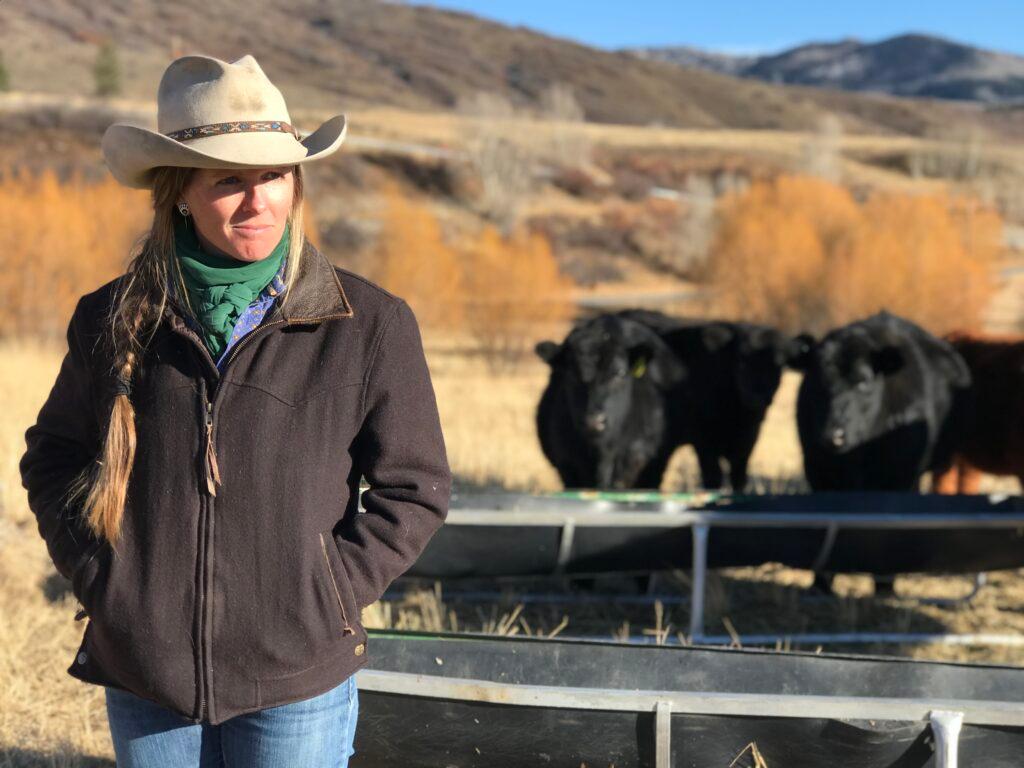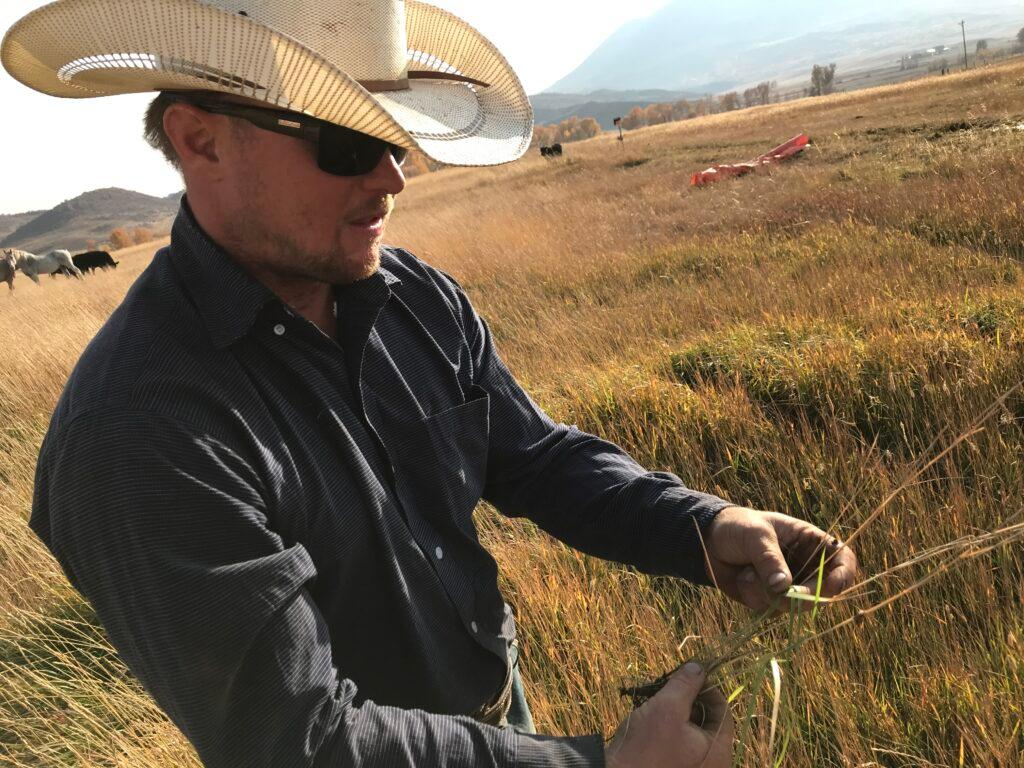
On a pasture outside of Steamboat Springs, rancher Matthew Gordon bends down and grabs a handful of grass. His wife Mandy watches and chuckles over his excitement.
“What's happened here is is really super cool, because we have like several layers of organic matter built up on top of this ground,” Matthew said. “But underneath, even now during this cold time, I can see new grass growing.”
The Gordon’s cattle helped build up this layer. Their hooves trample down grass and their own waste which makes good compost, and provides insulation to help store water and keep the temperature cool.
Matthew and Mandy are nerds for this kind of stuff.
They listen to podcasts, watch YouTube videos and take classes on the best ways to manage land in more natural and sustainable ways. They’ve worked on other ranches, but now they’re taking all that they’ve learned about regenerative agriculture to start their own operation — in the middle of a historic drought and a changing climate.
“I see water kind of going away and that can be a little scary,” Mandy said. “Through a lot of our practices, by helping promote healthier soil, it helps the water infiltrate and stay on the land instead of running off.”
Carbon farmers
A conventional rancher turns cattle out onto pasture for several weeks or months. But that can lead to overgrazing and major damage to the land, especially during a drought. So the Gordons use portable electric fences to keep their cattle moving, mimicking how predators chase herd animals around.
“Whether it be elk or bison that used to be on an area for a short period of time, consuming that one bite or two of the vegetation, and they would move,” Matthew said. “And that's when the magic happens of the recovery period.”
Since there’s still something left of that grass, it can use photosynthesis to regrow. Through that process, the plant captures carbon dioxide from the atmosphere and carries it down into the soil through a healthy root system.
“Carbon capture is kind of a buzzword these days, and they're trying to develop technologies to do it when this is a technology that we've had for forever,” Matthew said.

It’s likely that Colorado’s drought will continue into 2021 and Gov. Jared Polis is urging farmers and ranchers to prepare for it. To adapt to climate change, some producers are learning techniques that can also help trap and store carbon.
Industrial farming like intensive tillage, animal feedlots and the use of chemical fertilizers and pesticides, have done a lot of damage to soil ecosystems worldwide. The United Nation’s Food and Agriculture Organization estimates that the world could run out of topsoil in about 60 years at the current rate of degradation.
Nicole Civita, the sustainable food systems specialization lead at the University of Colorado Boulder, said before farmers and ranchers started to plow up the prairies, there was a “really complex, rich ecosystem.”
“We took what had developed over millennia and had been really well managed by indigenous communities, and destroyed it all very, very quickly to our own peril,” Civita said.
Regenerative agriculture is considered an important climate solution since it has the potential to draw down a lot of carbon. One technique that the U.S. Department of Agriculture tracks is the use of cover crops, which help promote healthy soil instead of leaving the ground bare between harvests.
Support and funding
From 2012 to 2017, there was a 2.8 percent increase in cover crop acreage in Colorado, USDA data shows. But only about 1 percent of the total crop acreage planted in Colorado was used for cover crops.
While more farmers and ranchers are adopting regenerative agriculture techniques, they make up a small number overall. Civita said that it’s not what most producers know.
“There’s a knowledge gap that we need to bridge because we have been farming in agrochemical-ly intensive ways for a long time,” she said.

Farmers and ranchers also need to be convinced that these techniques work, Civita said. Many are reluctant to abandon current farming methods that seem to be working.
It also takes time to reap the benefits, she said.
“It's not as though a farmer can stop farming in a more conventional way tomorrow and suddenly the soil is magically healed.”
Such efforts can help farmers adapt to climate change — and make more money, Civita said.
Cindy Lair, who manages the Colorado State Conservation Board program for the Colorado Department of Agriculture, said profitability is key to making regenerative farming popular.
“If it's not going to help make good business sense to a farmer or rancher, they're really not going to be interested in doing this,” Lair said.
Farmers and ranchers often need financial support to make the shift. Colorado has created a soil health program to help, but there’s no state funding for it yet. For now, the program is funded by a $5 million partnership with the USDA.
The Gordons got a microloan from a local nonprofit to help them start. Matthew said one of the biggest challenges is convincing other farmers and ranchers to give regenerative agriculture a shot.
“Inherently the farming and ranching community attracts very tough and hard-headed people, and that's what makes them good and what makes them resilient,” Matthew said.
The Gordons want to reshape that rugged mindset for a changing climate. For them, that means learning to adapt so their ranch can change, too.








